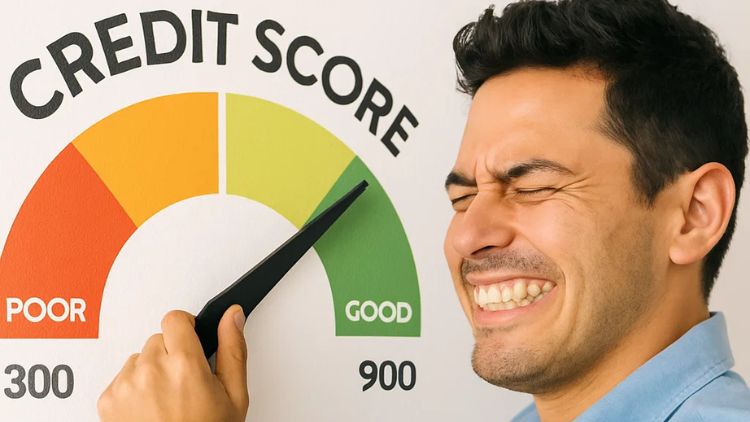Just like your physical health, your financial health requires regular check-ups.
You can’t get into good financial shape by just thinking about it; you need a proactive plan to understand where you are, where you want to go, and the steps to get there.

Neglecting these check-ups can lead to stress, debt, and a feeling of being perpetually behind.
Think of this article as your annual physical for your money.
This simple, 7-step checklist will walk you through the essential areas of your financial life. You don’t have to tackle them all at once. But by working through them one by one, you can systematically reduce your anxiety, build a strong foundation, and create a more secure future for yourself and your family.
Step 1: Create a Simple Spending Plan
Why it Matters: You cannot control what you don’t measure. A spending plan, or budget, is the single most important financial tool because it gives you a clear picture of where your money is actually going. It’s the foundation upon which all other financial goals are built.
How to Start: Forget complicated spreadsheets. Use a simple framework like the 50/30/20 rule, which allocates 50% of your take-home pay to Needs, 30% to Wants, and 20% to Savings.
To begin, just track your spending for one month without judgment. This will give you a realistic baseline and show you exactly where you can make adjustments.
Step 2: Build a Starter Emergency Fund
Why it Matters: An emergency fund is the buffer between you and financial disaster. It’s a cash reserve that prevents a single unexpected event—a car repair, a surprise medical bill, a job loss—from forcing you into high-interest credit card debt. It breaks the cycle of financial emergencies.

How to Start: The long-term goal is 3-6 months of living expenses, but don’t let that big number intimidate you.
Start with a small, achievable goal: $1,000. Open a separate, high-yield savings account so the money is out of sight. Set up an automatic transfer of $25 or $50 from your checking account every payday. The key is to start, no matter how small.
Step 3: Make a Plan to Attack High-Interest Debt
Why it Matters: High-interest debt, especially credit card debt with APRs over 20%, is a wealth-destroying emergency. It’s like trying to fill a bucket with a hole in it. Paying it off provides a guaranteed, risk-free return on your money equal to the interest rate.
How to Start: Choose a proven debt-payoff strategy like the Debt Snowball (paying off smallest balances first for motivation) or the Debt Avalanche (paying off highest-interest debt first to save the most money). The “best” plan is the one you will stick with. Also, investigate if a 0% APR balance transfer credit card could save you a significant amount in interest charges.
Step 4: Check Your Credit Score and Report
Why it Matters: Your credit is a vital sign of your financial health. It impacts the interest rates you’ll get on loans, your insurance premiums, and even your ability to rent an apartment. As this guide from The Ohio State University explains, errors on your credit report are surprisingly common and can be costly.
How to Start: Get your free credit reports from all three bureaus (Equifax, Experian, TransUnion) from the only official source: AnnualCreditReport.com.
Review them for any errors. You can also check your credit score for free through many of your existing credit card providers or banking apps.
Step 5: Review Your Insurance Coverage
Why it Matters: Insurance exists to protect your financial foundation from a catastrophic event. Being under-insured in a key area is a massive risk that could wipe out years of hard work and savings.
How to Start: Once a year, do a quick review. Shop around for your auto insurance—rates can change, and you could save hundreds. Make sure your renters or homeowners insurance coverage is adequate for your current belongings. If you have dependents who rely on your income, it’s crucial to explore disability and term life insurance.
Step 6: Automate Your Long-Term Savings and Investments
Why it Matters: The “secret” to consistent saving isn’t willpower; it’s automation. By making your savings automatic, you “pay yourself first” without having to make a decision each month.
It turns saving from a chore into a background habit.
How to Start: If your employer offers a 401(k) with a match, contribute at least enough to get the full match—it’s free money. Then, set up an automatic, recurring investment from your checking account into a retirement account like a Roth IRA. Even $50 a month builds a powerful habit and harnesses the power of compound growth. Government resources like Investor.gov can show you how even small amounts can grow over time.
Step 7: Set One Tangible Financial Goal for the Year
Why it Matters: All these steps can feel abstract without a clear purpose. A specific, meaningful goal provides the “why” that will keep you motivated. It turns budgeting and saving from a chore into a mission.
How to Start: Pick one big thing you want to accomplish with your money in the next 12-18 months. Is it saving $5,000 for a down payment? Paying off that last credit card? Saving for a specific vacation? Write it down. Break it into a monthly savings goal. This makes your financial plan personal and powerful.

This checklist can seem like a lot, but you don’t have to fix everything overnight.
The goal is progress, not perfection. Pick one step this week and start there. By performing this check-up regularly, you are taking control, reducing stress, and actively building the secure future you deserve.
Frequently Asked Questions (FAQ)
How often should I do this financial check-up?
A deep dive once a year is a great habit. For things like your budget and progress toward your goals, a lighter check-in once a quarter can help you stay on track and make adjustments as needed.
What’s more important: paying off debt or saving for retirement?
This is a common question with a nuanced answer, but here’s a widely accepted order of operations: 1) Contribute enough to your 401(k) to get the full employer match. 2) Aggressively pay off any high-interest debt (like credit cards with APRs over 8%). 3) Once high-interest debt is gone, max out your retirement accounts like your 401(k) and Roth IRA.
I’m overwhelmed. Which step is the absolute most important to start with?
Step 1: Know where your money goes. Every other step, from finding money for an emergency fund to attacking debt, relies on understanding your cash flow first. You can’t draw a map to your destination until you know your starting point.
WalletAware shares education, not individualized financial advice. Always confirm current terms on the issuer’s site before applying.